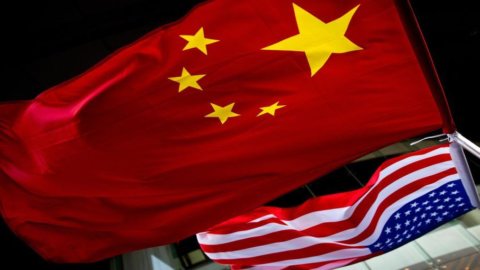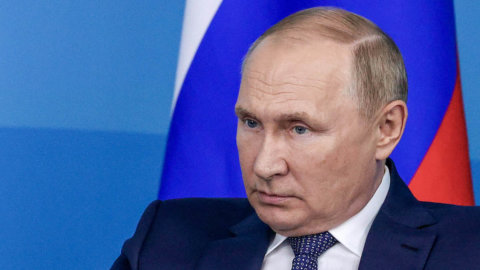A year and a half after the introduction of trade tariffs between the US and China, several negative signs have emerged: the US trade deficit with the world has not decreased, US exchanges with China have fallen both in terms of trade and direct investment, particularly penalizing American farmers and companies involved in international production chains. There is also a decrease in jobs in the US, with the US economy overall showing some signs of a slowdown. At the same time, during 2019, total Chinese imports decreased, and the US which has slipped to third place among Beijing's largest trading partners, behind the EU and the Association of Southeast Asian Nations (ASEAN): trade flows are in sharp decline, with exports down 13% and imports down 21%. However, China's overall exports in 2019 increased slightly, causing China's trade surplus to increase again.
In light of these economic results, last December Trump announced a first phase agreement with China, signed in recent days, with the intention of reopening the negotiating table, canceling the hypothesis of taxing another 160 billion dollars of imports, while maintaining the tariffs on 360 billion of Chinese goods (of which, however, the duties on 15-7,5 billion will be reduced from 110% to 120%). In return, China has agreed to import more agricultural goods from the US, enforce stronger protections for American intellectual property, open its markets to US financial institutions and commit to greater transparency in the management of its currency. The outcome represents an agreement that does not resolve the trade dispute but puts an end for the moment to a dangerous escalation which in August was further accelerated with the inclusion of Beijing in the list of "currency manipulators" and the threat of new tariffs Americans. It is, therefore, a truce, pending the more complex "phase two". Chinese promises have noIn fact, still touched one of the points of greatest tension between the two countries: the subsidies disbursed by the Chinese government to its companies to encourage exports, a point China does not seem willing to discuss. In any case, the agreement signed on January 15 is rather specific and onerous for Beijing. The seven chapters that compose it list all the measures that China will have to undertake to "avoid" a resumption of the American trade offensive, with a "Bilateral Evaluation and Dispute Resolution Arrangement" created for the purpose of evaluating the effective implementation of the agreement and settle any disputes that may arise.
The signing of the agreement comes at a very delicate stage for US politics, with favorable timing for President Trump in view of the November elections, in a phase in which the American economy begins to show signs of a slowdown. Despite projected 2020 growth of more than 2% and encouraging economic fundamentals for both inflation (below 2%) and the unemployment rate (at lows of 3,5%), the Federal Reserve in its Beige Book indicates how the growth of the last six months of 2019 has slowed down. Symptoms also confirmed by the Ism PMI (United States ISM Purchasing Managers Index) which records the extent of manufacturing activity in the USA, which fell below market expectations. Even the forecasts relating to industrial production, despite the positive results in November, are rather uncertain: le estimates reported by ISPI speak, in the event of a generalized increase in duties of 25% on total US-China trade, of a contraction of bilateral trade in the short term of 20-30% and a reduction in GDP in the order of 0,3-0,6% for the Use and 0,5-1,5% for China.
In turn, China is facing a shrinking economy whose real growth rate to 2024 is forecast by the IMF at 5,5%. A percentage that contravenes the growth standard set by the CCP in 2014, the so-called "New Normal", which provides for an annual growth rate of at least 6%. Despite the disadvantages, the signing of the agreement remains an obligatory choice for Beijing: the fact that it is a "first round" underlines how much China is looking to the US elections on November 3rd. At the same time, the more thorny topics such as state subsidies and market protection, tools that China has traditionally relied on to protect and strengthen domestic enterprises, are being postponed.
In this scenario, trade with China e The US accounts for a third of total European trade volumes (17,2% with Washington and 15,4% with Beijing). The trade escalation had produced, over the last year, a partial diversion of trade with the two countries which had replaced reciprocal imports with those from third countries, such as the EU. In 2019, US imports of tariff-hit Chinese products fell by an average of 25%. Second UNCTAD estimates, in the first half of 2019 the US replaced imports from Beijing with 21 billion from other countries, Europe in particular. Of this amount, the EU intercepted around 2,7 billion, particularly in the industrial machinery sector. The conclusion of the agreement could, then, progressively reduce the major European exports to the two contenders. The Chinese commitment to buy American products worth 200 billion could be to the detriment and to replace European products: the EU would suffer particularly in the field of industrial and agricultural goods, as the Chinese pledge to increase purchases from the US by 77,7 and 32 billion respectively.
The agreement could also bring benefits for European markets, if the promises on structural reforms, part of this first phase of the agreement, are kept by Beijing. Substantial changes in the field of ending forced technology transfers, greater protection of intellectual property and increased access to the Chinese financial services market are measures that go in the direction of a level of competition repeatedly requested by the European authorities. Furthermore, Brussels would benefit from the easing of global trade tensions which would translate, in the medium term, into greater growth in the volume of international trade and, therefore, into greater economic growth. At the same time, however, the easing of Sino-US tensions could lead Trump to turn his gaze in the direction of the EU and proceed with the imposition of the already threatened 25% tariffs on European cars, if an overall Brussels agreement is not reached. With considerable damage for producers and for the entire European economy.





